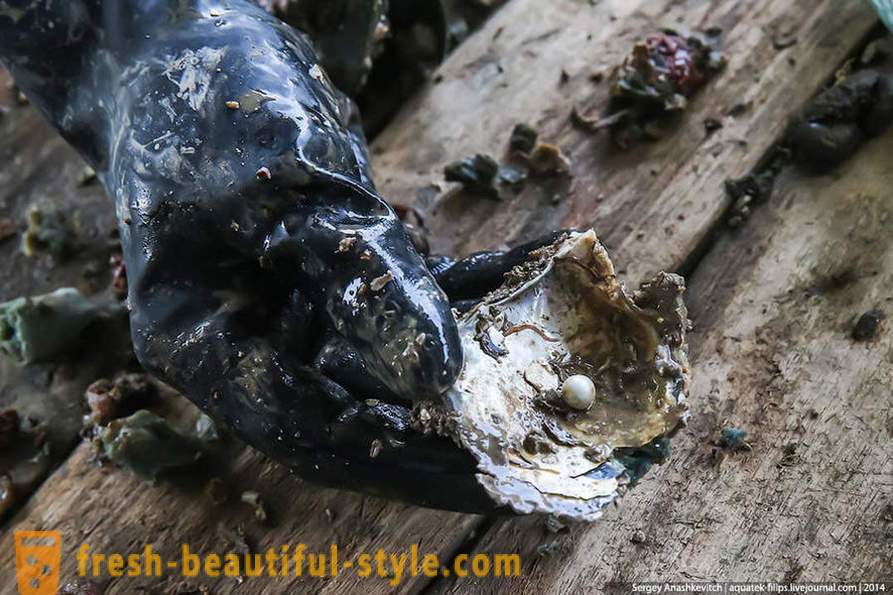As in Vietnam extract pearls
• How pearls mined in Vietnam

What are the pearls, and where does it come? Everybody knows it. Also, everyone knows about the Japanese ama divers who dive to a depth large enough to pick out clams with precious jewels inside. And many believe that the real pearls produced in this way only at the cost of superhuman efforts of people with great light.
In fact, the bulk of the pearls in the world produced a completely different way. It does not need to dive into many tens of meters, and from there to raise hundreds of mollusks, among which, perhaps, will be found a couple of shells with a pearl between the doors. In many countries, the pearls are grown, like potatoes in special fields ...
Start your story with a short educational program. Thus, the pearls formed inside the shells of shellfish after exposure to sand and subsequent gradual deposition on it nacre, thereby forming a solid pearl bead, which is valued as gems and used for the production of jewelry. Why in contact with the grains formed pearl? A grain of sand inside the mollusk is the latter constant irritation and causing it to secrete nacre, which concentrically surrounds the annoying thing. The longer grain is in the body of the mollusk, the larger mother of pearl bead is inside it.
Classic fashion pearls mined for a long time - with baskets of divers dive to the bottom of the rocky bays and open sea areas and lift out hundreds of mollusks, which then opens in search of pearl beads. Absolutely clear that pearls are not all the shells of molluscs and many simply thrown back into the sea. Truly titanic efforts for the sake of some of pearl beads. In 1896, there was, without exaggeration, a revolution in the pearl market, which allowed it to produce at industrial scale ...! And so, from the beginning of the XX century in various countries of Southeast Asia, who have access to the sea, began to appear that's such a huge field. It produces pearls.
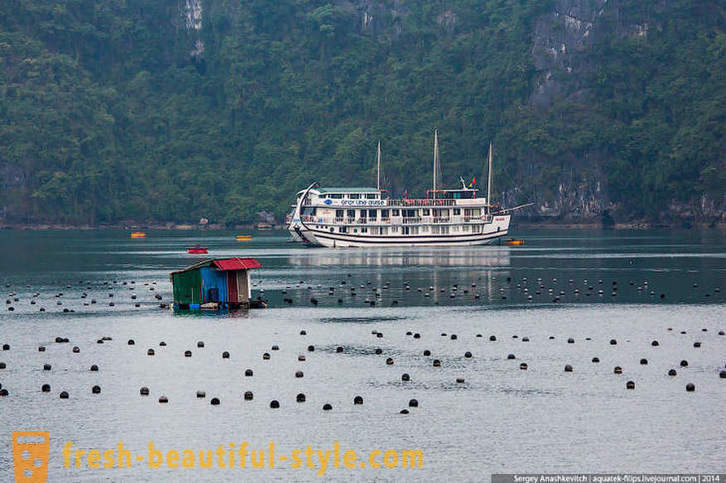
This is the field on which grow clams. Now divers no longer need to search for new accumulations of molluscs in the open sea, submerged to a greater depth and to shovel a huge number of shells in search of treasured gems. Today's shellfish are grown on such beds, where they live on special nets suspended from floating buoys. All you need to do for production of shells - swim to a buoy on the boat and pull the net with clams on board.

shellfish fields are located near or around here these floating farms. That staff lives here, the service field, reverse shell for the removal of pearls and grow young for subsequent settlement on its pearl "beds." And here it made one operation, without which all these fields would be completely useless ...

The farm is a empty plastic containers that serve as floats, on which the planks are placed offices and sleeping cabins
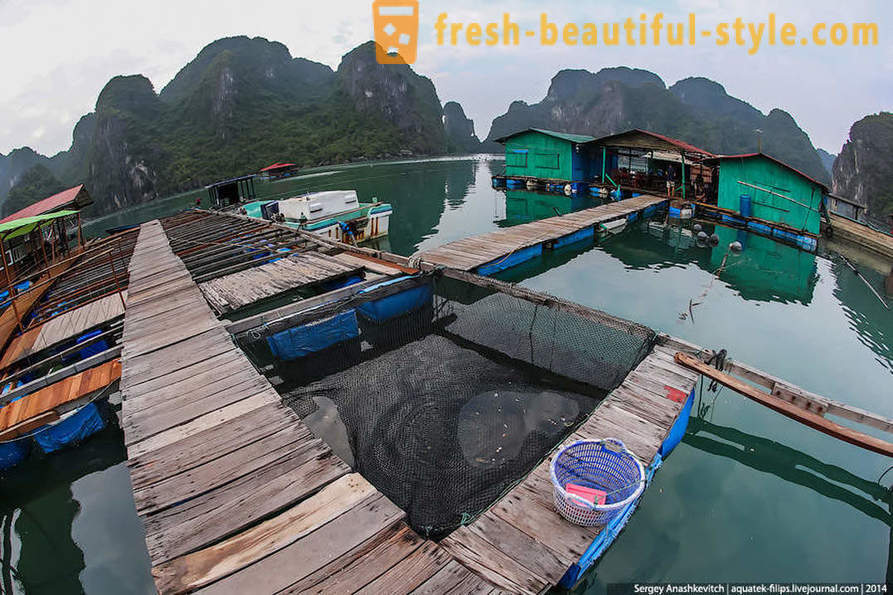
In the middle of a farm located kindergarten. There were grown shellfish before they land on the general field. A kind of pearl seedlings

Baskets with floats, which grows juveniles
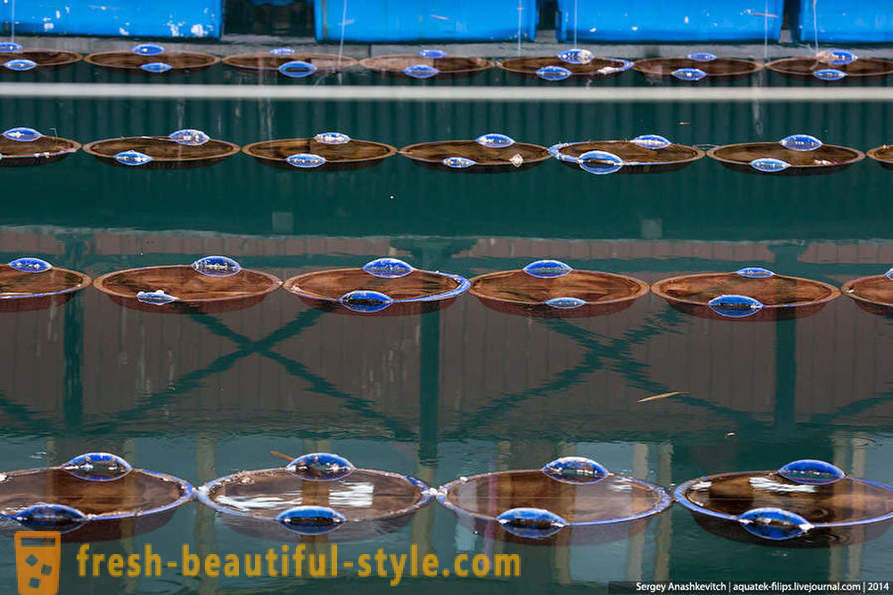
the most different kinds of shellfish are used for the cultivation of pearls. During the same period of time in some forms only a tiny pea pearl, in others - a great big mother of pearl bead. In addition, depending on the type of shellfish, pearls can be with different shades - yellow, green, black and even blue pearls. Blue pearls are very rare and are very expensive.
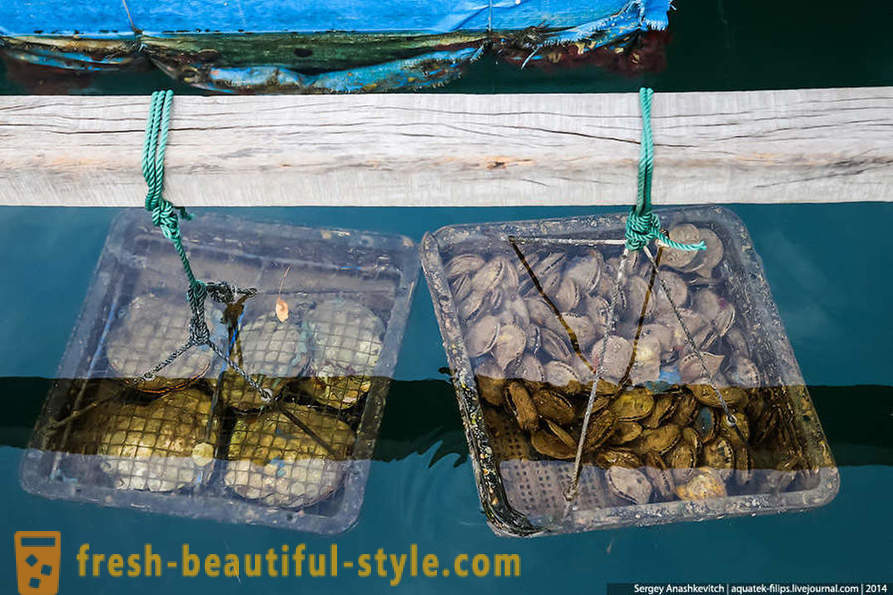
When the pearl beds in the main field, it is time to collect "crop", the workers raise the net with shells and bring them to the opening on the farm.
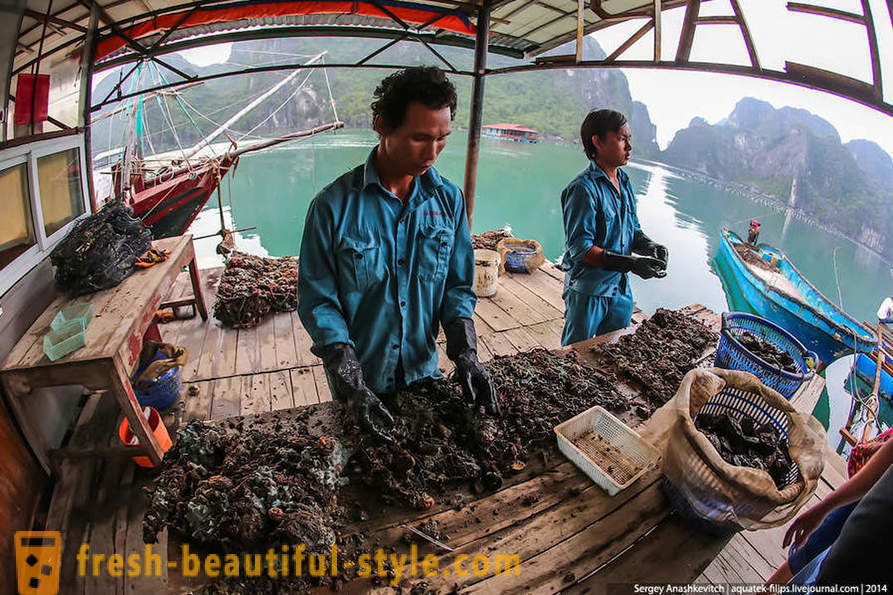
This work is separated from the grid and clams are cleaned from adhering many months of additional debris and fouling.
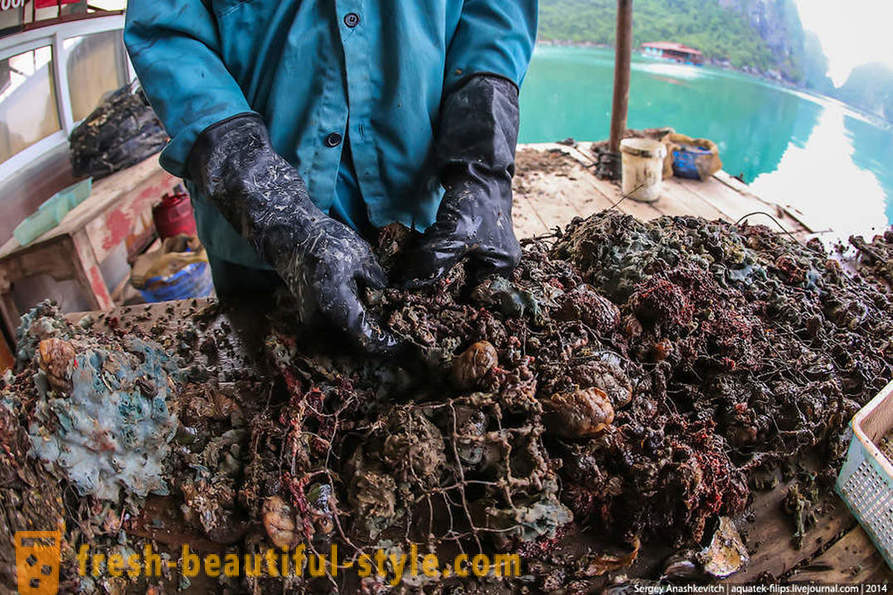
Purified shells are collected in baskets, which will be opened later in focus of protection and surveillance cameras. After each shell hiding tens or hundreds of dollars.
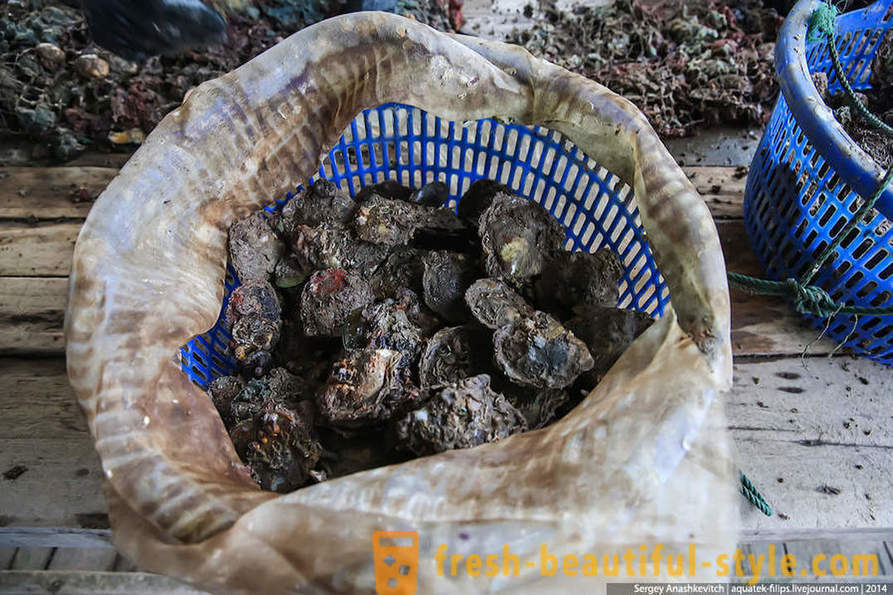
But surely you already ripened a question - why in each shell has guaranteed the pearl? In fact, all the processes described above - this is only the technical steps which are obvious and do not differ from the steps that are performed and ama divers. Most importantly, what they do on the farm - is embedded in the living clam gonad the very grain of sand! And that was the most revolutionary discovery of Kokichi Mikimoto in 1896, which allowed to cultivate pearls on an industrial scale.
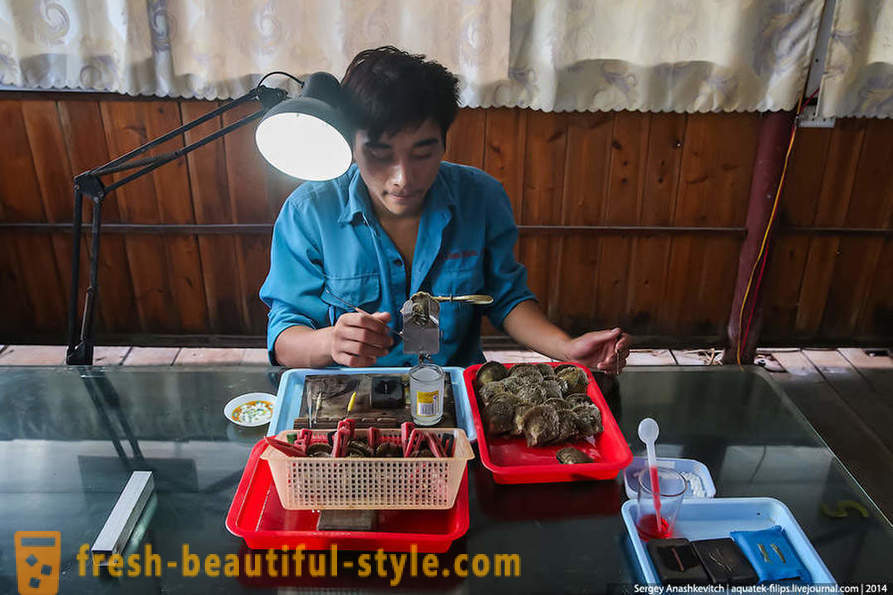
The guy in the photo 12 hours a day engaged in that neatly reveals the young animals from the kindergarten and is implanted in the living clam irritant around which will form a ball of pearl, that is to grow the pearl.
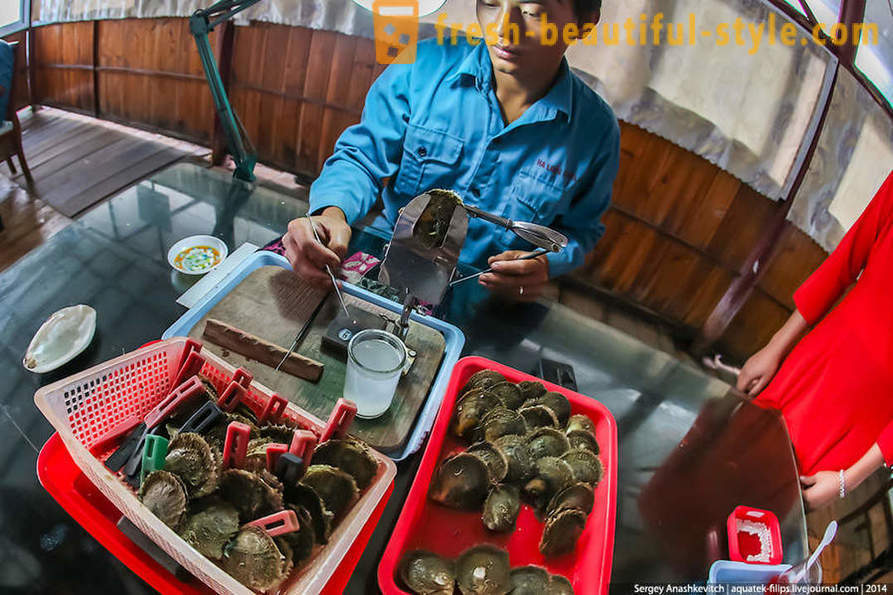
in the gonads are adopting as the sand on the analogy of natural processes, and fairly large pearl beads, which are made immediately from the remains of mollusk shells.
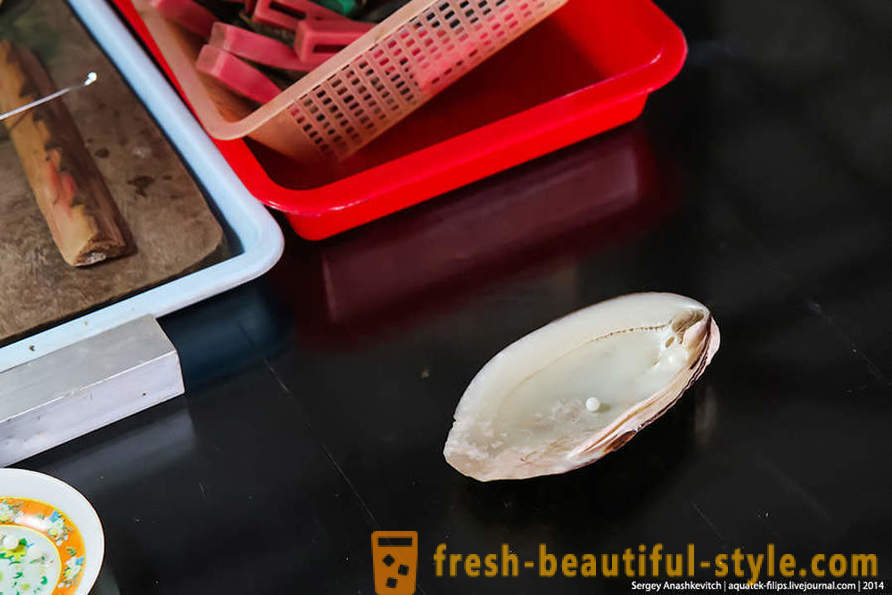
This is truly a piece of work, that is. To. The clam after surgery to stay alive.
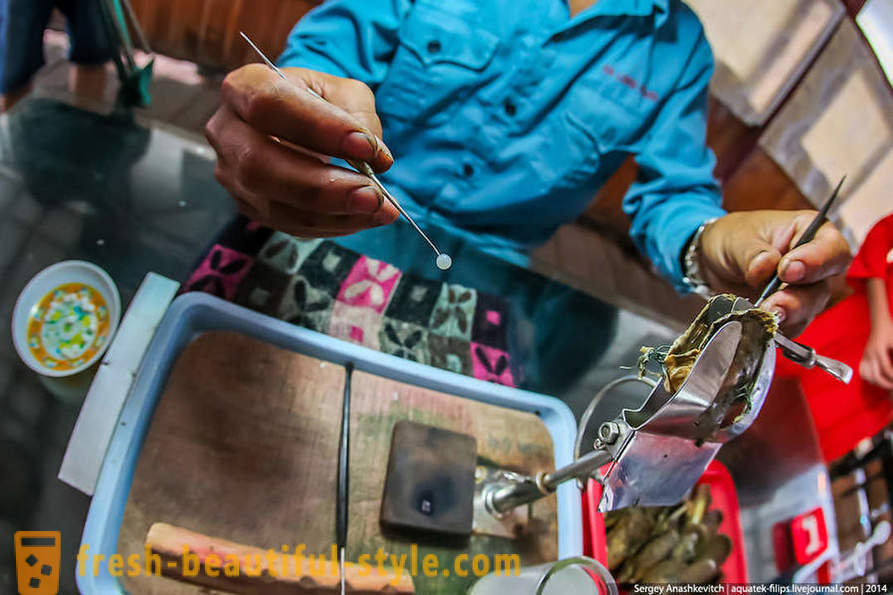
Folds neatly parted on special stocks, so as not to damage the muscle retaining shell valves.
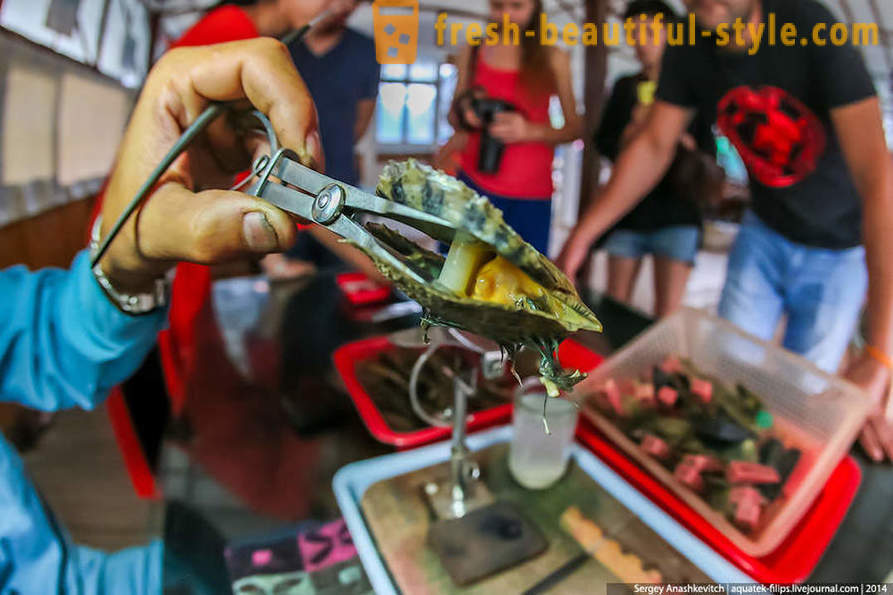
Then use the tweezers in the gonad and mantle placed ball. After that fit inside the shell-mesh bags and transferred to a pearl field.
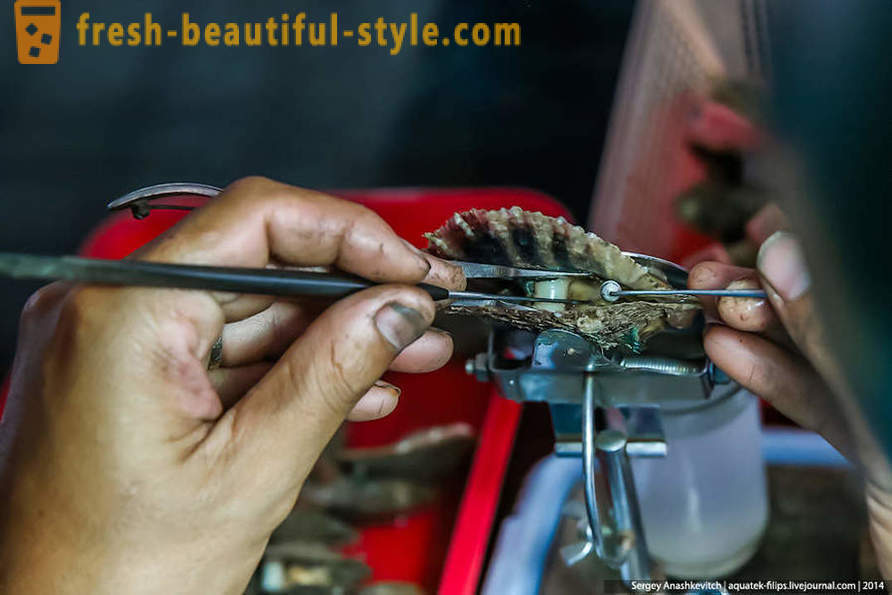
And in a few months or years, the workers would get clams from the sea and each of them will find just such a gem ...
This pearl is not artificial, since all processes take place in it just as well as with the natural grain of sand gets inside the mollusk. Of course, the cultured pearls is much cheaper that still mined ama divers. Even cultured pearls vary in price, which ranges from 300 to 30 000 dollars (per thread), depending on the diameter, surface quality and the quality of the selection of the color shade of pearls within the same necklace.
Incidentally, it is interesting that the pearl has a shelf life. And he's not so great - no more than 200 years (with the exception of cases where a pearl is no air access). The oldest pearl, whose history can be traced, - "Peregrina", owned by Elizabeth Taylor.
